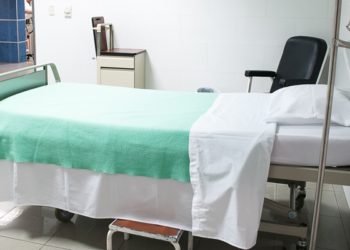2 Minute Medicine Rewind March 17, 2025
1. Compared with the use of mannitol, the use of hypertonic saline (HTS) in children with traumatic brain injury (TBI) was not associated with increased survival or improved functional outcomes.
Evidence Rating Level: 2 (Good)
Current guidelines from the Brain Trauma Foundation recommend the use of 3% HTS in children with TBI who have developed elevated intracranial pressure (ICP). However, past studies comparing the use of HTS to the use of mannitol in the management of pediatric TBI focused on reductions in ICP, but not on improvements in clinical outcomes. This prospective, multicentre cohort study therefore sought to compare the mortality and functional outcomes among children with moderate to severe TBI and at risk of developing elevated ICP who receive 3% HTS versus 20% mannitol. 445 children (median age[IQR], 5.0[2.0-11.0]; 62.7% boys) with TBI who received either 3% HTS or 20% mannitol from 28 participating pediatric intensive care units across Asia, Latin America and Europe were included in the study. There was no difference in the duration of mechanical ventilation, number of seizures or hospital stay between children who received HTS versus mannitol. Among children who received HTS only, mannitol only, both agents or neither of the agents, the children who had the highest mortality were those who received both agents (adjusted RR, 5.86 [95% CI, 2.40-19.00]; P = .001). There was no difference in mortality between those who received HTS only or mannitol only (adjusted RR, 1.27 [95% CI, 0.58-2.66]; P = .52). 56.0% (n = 103) of the HTS only group required neurosurgical intervention while 40.2% (n = 33) of the mannitol only group required neurosurgical intervention. Overall, this study found that there were no differences in mortality or functional outcomes between the use of HTS and mannitol for the management of pediatric TBI.
Short-Term Safety and Effectiveness for Tenecteplase and Alteplase in Acute Ischemic Stroke
1. The usage of tenecteplase in patients with acute ischemic stroke was associated with similar effectiveness and safety compared with the use of alteplase.
Evidence Rating Level: 2 (Good)
Current agents used in the thrombolytic management of acute ischemic stroke include tenecteplase and alteplase. Recent studies have shown that tenecteplase has at least similar effectiveness as alteplase in the management of acute ischemic stroke, yet there is a lack of real-world data comparing the two agents in routine clinical practice. This nationwide prospective cohort study therefore sought to investigate the safety and efficacy of tenecteplase compared to alteplase in the management of acute ischemic stroke. 79,550 patients (mean [SD] age, 69.6 [14.7] years; 52.4% male) with a final discharge diagnosis of acute ischemic stroke from the United States-based GWTG-Stroke registry were included for analysis. The primary endpoint for the study was functional independence on discharge as measured by the modified Rankin Scale (mRS) with safety endpoints including symptomatic intracranial hemorrhage (sICH) within 36 hours and in-hospital mortality. There was no difference in functional independence between the use of tenecteplase and alteplase (AOR, 1.00; 95% CI, 0.93-1.07). For safety outcomes, there was no difference in the rates of sICH (AOR, 0.96; 95% CI, 0.83-1.11) and in-hospital mortality (AOR, 0.95; 95% CI, 0.84-1.06) between those receiving tenecteplase and alteplase. Overall, this study found that the use of tenecteplase in patients with acute ischemic stroke was associated with similar effectiveness and safety outcomes as alteplase.
1. In patients with symptomatic gallbladder stones who were found to have asymptomatic concomitant common bile duct stones (CBDS), laparoscopic cholecystectomy without CBDS removal was associated with acceptable short-term outcomes.
Evidence Rating Level: 2 (Good)
CBDS may be found in up to 20% of individuals undergoing laparoscopic cholecystectomy for symptomatic gallstones. However, there is limited evidence regarding the appropriate management for asymptomatic CBDS discovered during such settings. As such, this multicentre, prospective cohort study sought to investigate the feasibility of a “wait and see” strategy in the management of CBDS for patients undergoing laparoscopic cholecystectomy. 60 patients (mean age, 40; 66.7% female) with symptomatic gallstones and asymptomatic CBDS from various hospitals in Egypt were included in the study between February 2023 and July 2023 and followed for up to 6 months. The primary outcome of interest was the occurrence of biliary manifestations within 6 months following laparoscopic cholecystectomy. Among all patients, 2 (3.3%) developed symptomatic CBDS within 6 months after initial laparoscopic cholecystectomy which did not require surgical intervention and resolved with medical management. After 6 months, 16 patients (26.7%) experienced spontaneous passage of CBDS as confirmed by abdominal ultrasound. Overall, this study found that, among patients with symptomatic gallbladder stones requiring laparoscopic cholecystectomy, a “wait and see” strategy for asymptomatic CBDS was associated with acceptable short-term outcomes.
1. In patients with treatment-naive high-risk myelodysplastic syndromes (HR MDS), the use of venetoclax (14 days) plus azacitidine was well tolerated.
2. In patients with treatment-naive HR MDS, venetoclax plus azacitidine resulted in a 26-month median overall survival (mOS) rate with a complete response (CR) observed in 29.9% of patients.
Evidence Rating Level: 2 (Good)
HR MDS represents a heterogeneous group of hematological disorders with increased likelihood of progressing to acute myeloid leukemia (AML). Azacitidine is currently the first line treatment for HR MDS, but further research is required to delay time to progression and to improve survival. This open-label, multicentre phase 1b study therefore sought to investigate the safety of combining venetoclax and azacitidine in patients with HR MDS. Patients over the age of 18 with no prior treatment for MDS were included in the study and successively enrolled into one of three dose escalation cohorts receiving increasing dosages of venetoclax for 14 days in combination with azacitidine. 107 patients (median age[range], 68 years[26-87]; 69.2% male) received at least 1 dose of venetoclax at the recommended phase 2 dose (RP2D) of 400 mg of venetoclax and were included in safey and efficacy analysis. 10 patients (9.3%) required treatment discontinuation because of an adverse event (AE). CR was observed in 29.9% (n = 32; 95% CI, 21.4-39.5) of patients receiving RP2D and the mOS was 26.0 months. All patients treated at RP2D experienced at least 1 treatment-emergent adverse event (TEAE) and 56 (52.3%) patients require venetoclax dose reduction for any reason. Overall, this study found the use of venetoclax plus azacitidine in patients with treatment-naive HR MDS was well tolerated and was associated with an mOS of 26.0 months.
1. In patients with advanced or recurrent endometrial cancer (EC) with previous exposure to carboplatin and paclitaxel (PT), lenvatinib plus pembrolizumab was not associated with improved survival compared with re-challenge PT.
Evidence Rating Level: 2 (Good)
Currently, PT three times per week remains the first-line therapy for recurrent or advanced endometrial cancer. However, outcomes associated with second-line therapy for recurrent or advanced EC have been poor, necessitating further research to identify novel strategies for second-line management. This retrospective study therefore sought to investigate the use of lenvatinib plus pembrolizumab or re-challenge PT in patients with PT-pretreated advanced or recurrent EC. Propensity score matching was conducted to identify 334 pairs of individuals with PT-pretreated advanced or recurrent EC and who received one of re-challenge PT (median age, 65.5 years) or lenvatinib plus pembrolizumab (median age, 66.8 years) from the TriNetX Research Network in the United States. 378 individuals receiving doxorubicin were also included. After propensity score matching, there was no significant difference in the median overall survival (OS) rate between those receiving re-challenge PT and lenvatinib plus pembrolizumab (median OS: 19.5 vs. 17.1 months, p = 0.53; aHR: 0.88, 95% CI 0.62–1.24). After propensity score matching, lenvatinib plus pembrolizumab was associated with a significantly greater median OS compared to doxorubicin (median OS: 16.7 vs. 9.1 months, p < 0.001; aHR: 0.44, 95% CI 0.32–0.59). Overall, this study found that among patients with PT-pretreated advanced or recurrent EC, lenvatinib plus pembrolizumab was not associated with improved survival compared with re-challenge PT.
Image: PD
©2025 2 Minute Medicine, Inc. All rights reserved. No works may be reproduced without expressed written consent from 2 Minute Medicine, Inc. Inquire about licensing here. No article should be construed as medical advice and is not intended as such by the authors or by 2 Minute Medicine, Inc.







